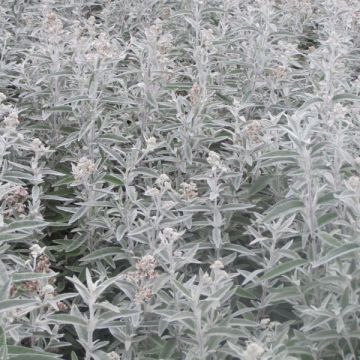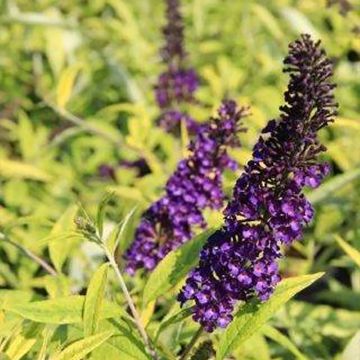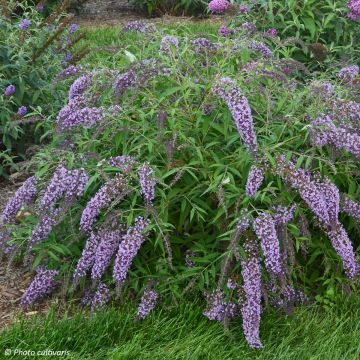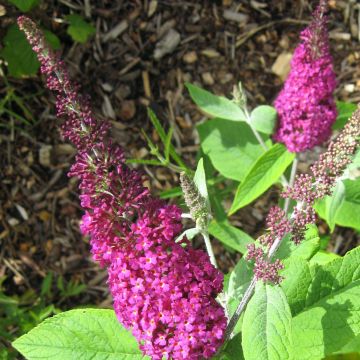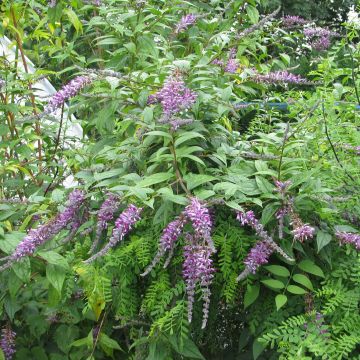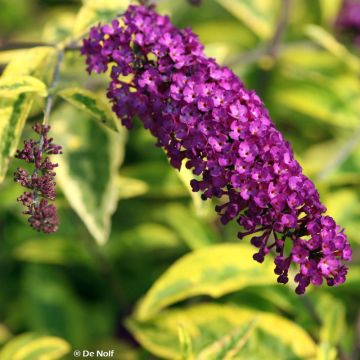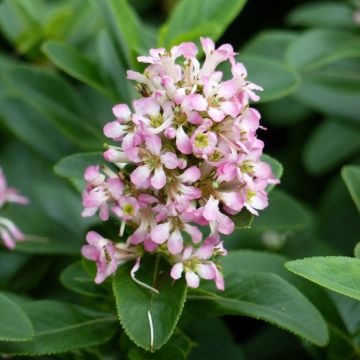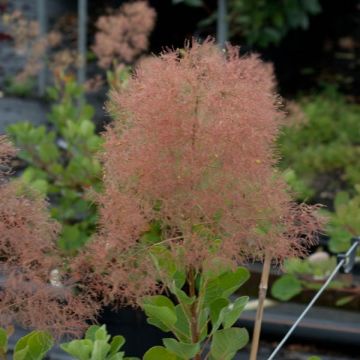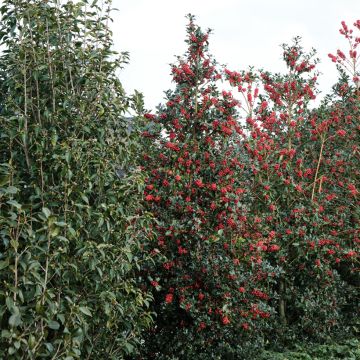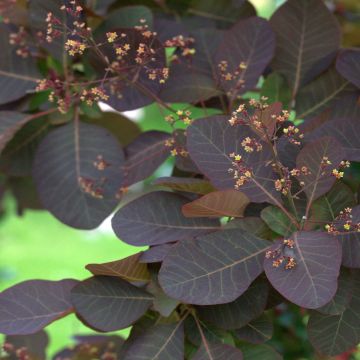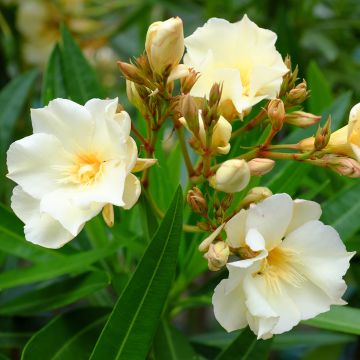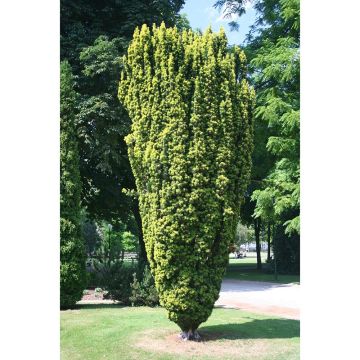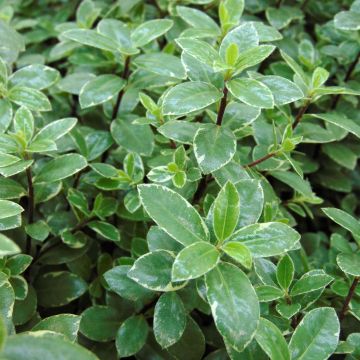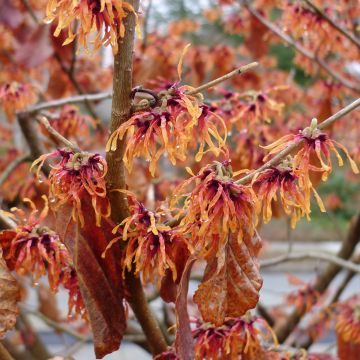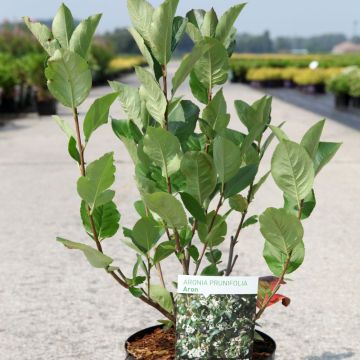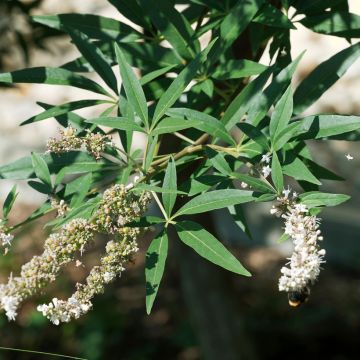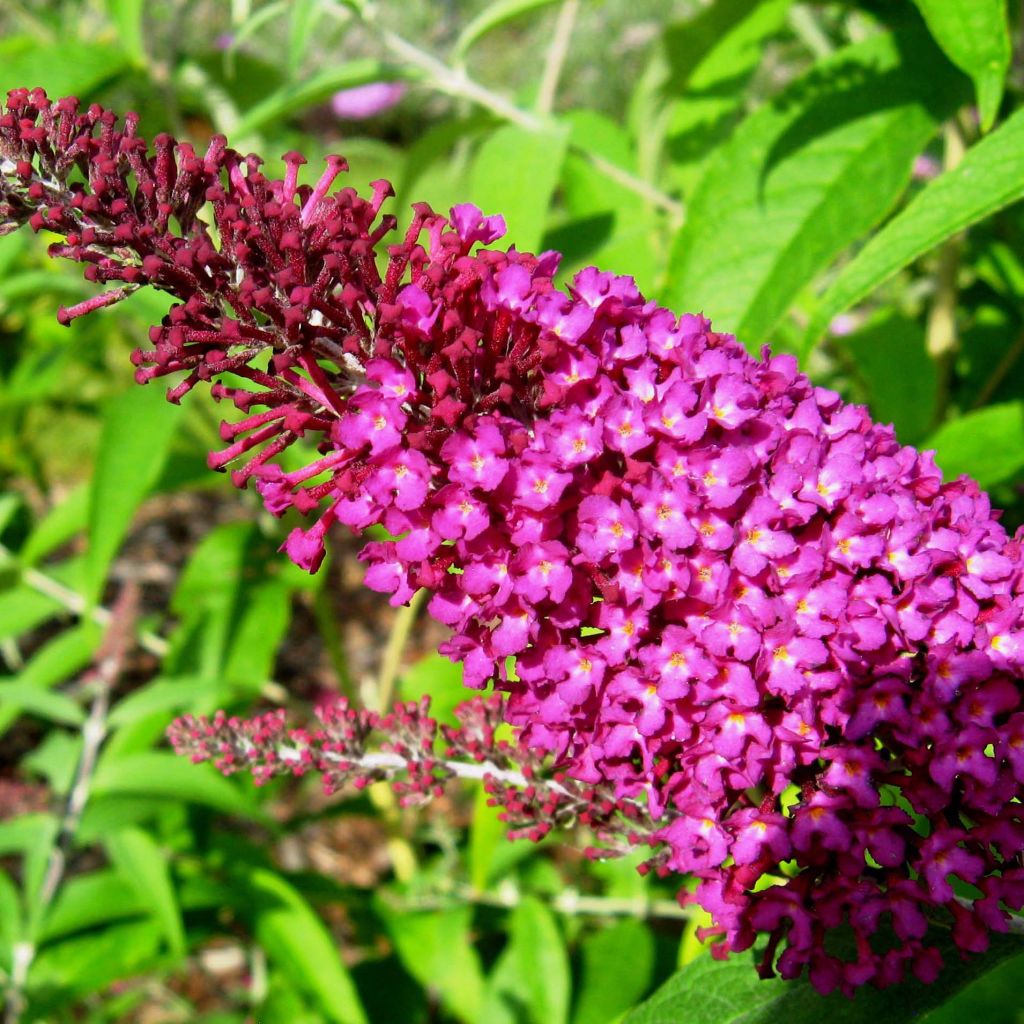

Buddleja davidii Sugar Plum - Butterfly Bush
Buddleja davidii Sugar Plum - Butterfly Bush
Buddleja x davidii Sugar Plum
Butterfly Bush, Summer Lilac
This item cannot be shipped to the selected country
Delivery charge from €5.90
More information
Schedule delivery date,
and select date in basket
This plant carries a 24 months recovery warranty
More information
We guarantee the quality of our plants for a full growing cycle, and will replace at our expense any plant that fails to recover under normal climatic and planting conditions.
From €5.90 for pickup delivery and €6.90 for home delivery
Express home delivery from €8.90.
Does this plant fit my garden?
Set up your Plantfit profile →
Description
Buddleja davidii 'Sugar Plum', also known as Buddleja Sugar Plum ('Lonplum'), is a recent hybrid with many qualities! Its habit is more compact than the typical variety and forms a small, dense bush. From summer to autumn, it projects flower spikes in all directions. Its flowers are a deep purple-red and contrast remarkably well with its silvery grey-green foliage. It can be grown in a pot on a terrace, in the ground in a border, or as part of a hedge. Hardy and undemanding, this butterfly bush will easily bring life to your outdoor spaces!
The buddleja genus includes around a hundred species of deciduous or evergreen shrubs, native to China, Africa, South Asia, and South America. They are named after Adam Buddle, a famous English botanist from the 17th century. This genus is sometimes spelled 'Buddleia', but the official spelling appears to be 'Buddleja'. Most buddlejas are shrubs with a flexible and irregular habit, giving them a very natural appearance.
'Sugar Plum' is a result of a cross between Buddleja davidii 'Royal Red' and B. davidii 'Summer Beauty', and it combines the main qualities of these two varieties: very vibrant purple flowers and a compact and dense habit. This small-growing shrub reaches a height of 1.5 to 2.5 m (5 to 8 ft) with a spread of 1 to 1.5 m (3 to 5 ft). It forms a generous, well-branched bush with a fairly orderly silhouette for a buddleja. Its arching branches bear deciduous, silvery grey-green foliage. Its long leaves measure over 10 cm (4 in), are simple, lanceolate, opposite, and have slightly toothed margins. From mid-summer to autumn, Buddleja davidii 'Sugar Plum' is covered in flower spikes that project in all directions, above its still visible foliage, creating a striking contrast of colours. This flowering consists of small tubular flowers in shades of pink-red with a yellow throat, arranged in long conical panicles at the end of the branches. The racemes are very dense and can measure up to 30 cm (12 in) long. The flowers release a light sweet fragrance that attracts bees and butterflies. The flowering is followed by fruiting in the form of small round capsules containing numerous seeds that birds help to disperse. Some buddleja species are considered invasive due to their abundant self-seeding. However, it should be noted that these shrubs generally colonise areas heavily impacted by human activity, particularly urban areas. Buddleja davidii, or David's butterfly bush, is one of these invasive species that should be controlled to prevent its spread.
Gardeners appreciate the long summer flowering of buddlejas and use them in hedgerows, borders, and as standalone plants when their size allows. Thanks to its modest size and compact habit, Buddleja davidii 'Sugar Plum' can easily be grown in a container. It decorates terraces and balconies for long months with its striking foliage and radiant flowering. This dwarf buddleja can also be planted individually in a small garden without fear of going unnoticed! You can also use it in a flower bed or hedge, combined with a 'Red Heart' hibiscus for the contrast of its white flowers, Pseudowintera 'Mount Congreve' for its dense and decorative foliage, or a 'Falconnet Charlet' flowering quince for its dark pink spring blossoms.
Report an error about the product description
Buddleja davidii Sugar Plum - Butterfly Bush in pictures
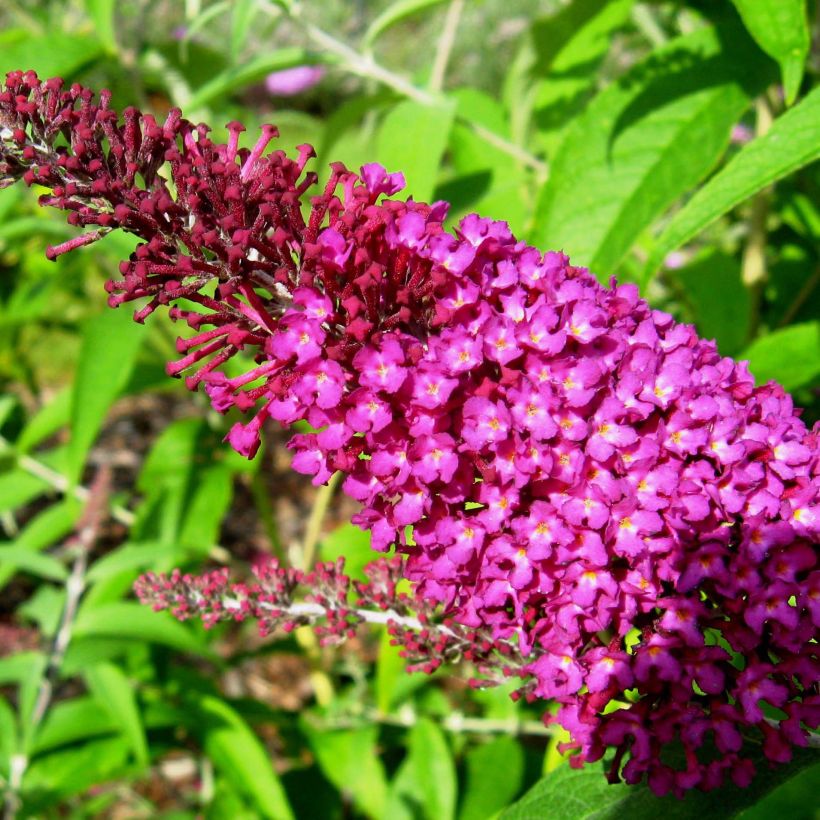

Plant habit
Flowering
Foliage
Botanical data
Buddleja
x davidii
Sugar Plum
Buddlejaceae
Butterfly Bush, Summer Lilac
Cultivar or hybrid
Other Buddleja -Butterfly bush
Planting and care
In its country of origin, China, Buddleja davidii grows in mountainous areas, within shrubby thickets. It is highly resistant to pollution and also establishes itself along highways or railways. It is a hardy bush that can withstand temperatures below -20°C (-4°F). It thrives in very sunny or slightly shaded locations, sheltered from strong winds, and tolerates all types of soil, even poor and chalky ones.
Plant your 'Sugar Plum' butterfly bush in deep, well-drained, slightly enriched soil. Note that excessively rich soil will promote vegetative growth at the expense of flowering. Protect it from excessive moisture in winter. However, it will easily tolerate short periods of drought once it is well established.
At the end of winter, ideally in March, prune your buddleja severely. This will help maintain the vigour of the bush and promote generous flowering. Easy to cultivate and resistant to diseases, Buddleja davidii 'Sugar Plum' will reveal its beauty without difficulties!
Planting period
Intended location
Care
-
, onOrder confirmed
Reply from on Promesse de fleurs
Hedge shrubs
Haven't found what you were looking for?
Hardiness is the lowest winter temperature a plant can endure without suffering serious damage or even dying. However, hardiness is affected by location (a sheltered area, such as a patio), protection (winter cover) and soil type (hardiness is improved by well-drained soil).

Photo Sharing Terms & Conditions
In order to encourage gardeners to interact and share their experiences, Promesse de fleurs offers various media enabling content to be uploaded onto its Site - in particular via the ‘Photo sharing’ module.
The User agrees to refrain from:
- Posting any content that is illegal, prejudicial, insulting, racist, inciteful to hatred, revisionist, contrary to public decency, that infringes on privacy or on the privacy rights of third parties, in particular the publicity rights of persons and goods, intellectual property rights, or the right to privacy.
- Submitting content on behalf of a third party;
- Impersonate the identity of a third party and/or publish any personal information about a third party;
In general, the User undertakes to refrain from any unethical behaviour.
All Content (in particular text, comments, files, images, photos, videos, creative works, etc.), which may be subject to property or intellectual property rights, image or other private rights, shall remain the property of the User, subject to the limited rights granted by the terms of the licence granted by Promesse de fleurs as stated below. Users are at liberty to publish or not to publish such Content on the Site, notably via the ‘Photo Sharing’ facility, and accept that this Content shall be made public and freely accessible, notably on the Internet.
Users further acknowledge, undertake to have ,and guarantee that they hold all necessary rights and permissions to publish such material on the Site, in particular with regard to the legislation in force pertaining to any privacy, property, intellectual property, image, or contractual rights, or rights of any other nature. By publishing such Content on the Site, Users acknowledge accepting full liability as publishers of the Content within the meaning of the law, and grant Promesse de fleurs, free of charge, an inclusive, worldwide licence for the said Content for the entire duration of its publication, including all reproduction, representation, up/downloading, displaying, performing, transmission, and storage rights.
Users also grant permission for their name to be linked to the Content and accept that this link may not always be made available.
By engaging in posting material, Users consent to their Content becoming automatically accessible on the Internet, in particular on other sites and/or blogs and/or web pages of the Promesse de fleurs site, including in particular social pages and the Promesse de fleurs catalogue.
Users may secure the removal of entrusted content free of charge by issuing a simple request via our contact form.
The flowering period indicated on our website applies to countries and regions located in USDA zone 8 (France, the United Kingdom, Ireland, the Netherlands, etc.)
It will vary according to where you live:
- In zones 9 to 10 (Italy, Spain, Greece, etc.), flowering will occur about 2 to 4 weeks earlier.
- In zones 6 to 7 (Germany, Poland, Slovenia, and lower mountainous regions), flowering will be delayed by 2 to 3 weeks.
- In zone 5 (Central Europe, Scandinavia), blooming will be delayed by 3 to 5 weeks.
In temperate climates, pruning of spring-flowering shrubs (forsythia, spireas, etc.) should be done just after flowering.
Pruning of summer-flowering shrubs (Indian Lilac, Perovskia, etc.) can be done in winter or spring.
In cold regions as well as with frost-sensitive plants, avoid pruning too early when severe frosts may still occur.
The planting period indicated on our website applies to countries and regions located in USDA zone 8 (France, United Kingdom, Ireland, Netherlands).
It will vary according to where you live:
- In Mediterranean zones (Marseille, Madrid, Milan, etc.), autumn and winter are the best planting periods.
- In continental zones (Strasbourg, Munich, Vienna, etc.), delay planting by 2 to 3 weeks in spring and bring it forward by 2 to 4 weeks in autumn.
- In mountainous regions (the Alps, Pyrenees, Carpathians, etc.), it is best to plant in late spring (May-June) or late summer (August-September).
The harvesting period indicated on our website applies to countries and regions in USDA zone 8 (France, England, Ireland, the Netherlands).
In colder areas (Scandinavia, Poland, Austria...) fruit and vegetable harvests are likely to be delayed by 3-4 weeks.
In warmer areas (Italy, Spain, Greece, etc.), harvesting will probably take place earlier, depending on weather conditions.
The sowing periods indicated on our website apply to countries and regions within USDA Zone 8 (France, UK, Ireland, Netherlands).
In colder areas (Scandinavia, Poland, Austria...), delay any outdoor sowing by 3-4 weeks, or sow under glass.
In warmer climes (Italy, Spain, Greece, etc.), bring outdoor sowing forward by a few weeks.


































